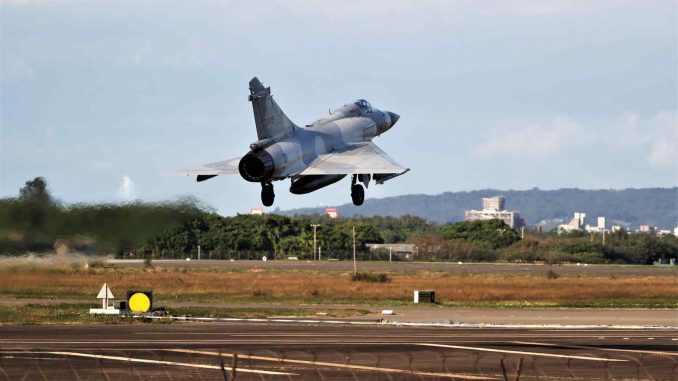
A Taiwanese fighter jet lands at an airbase in Hsinchu, northern Taiwan, on Dec. 10, as Taipei kept its forces on high alert over Chinese military activity. © AP
NIKKEI ASIA | Published December 11, 2024
Beijing’s aggressive maneuvers cast shadow over Taipei-Shanghai forum
TAIPEI — China has launched what Taiwan officials say is its largest maritime deployment in recent memory, ratcheting up intimidation against Taipei and neighboring countries weeks before the U.S. presidential transition.
Beijing had dispatched more than 90 naval and coast guard ships to the region “aimed at all the parties in the first island chain,” according to a Taiwanese national security memo seen by Nikkei Asia, referring to Taiwan, Japan’s Okinawa prefecture and the Philippines. The memo calls it China’s largest fleet deployment in regional waters in nearly three decades and estimates it took 70 days to prepare.
“The PRC wants to ‘pressure test’ Taiwan and see how far it can go,” Lin Ying-yu, a professor at New Taipei’s Tamkang University, told Nikkei Asia, adding that Beijing is also testing its navy and coast guard ships’ wintertime maneuverability.
China has not explicitly explained the elevated activity or announced drills, after carrying out two major exercises near Taiwan earlier this year. Beijing was widely expected to follow up with a third round as “retaliation” for Taiwan President Lai Ching-te’s tour last week of Pacific allies the Marshall Islands, Tuvalu and Palau, with two U.S. stopovers, in Hawaii and Guam.
China’s government, which considers Taiwan part of China, openly detests Lai’s defense of the island’s sovereignty and identity, and seeks to isolate it internationally.
“China uses President Lai’s visit as an excuse,” the national security memo says. “The real purpose is basically to create an island chain under its control, and to create strategic deterrence and posture during the handover period between the old and new American administrations.”
Donald Trump is set to return to the White House on Jan. 20.
This current deployment far exceeds the series of “Sword” drills launched in May and October, ostensibly in response to speeches by President Lai, as well as exercises that followed then-U.S. House Speaker Nancy Pelosi’s visit to Taipei in 2022, the memo says. It argues that the preparation time that would have been needed shows the move “has nothing to do with” Lai’s Pacific trip.
READ FULL ARTICLE
SOURCE: www.asia.nikkei.com
RELATED: China says it takes ‘necessary measures’ to defend sovereignty over Taiwan

A Navy miniature is seen in front of displayed Chinese and Taiwanese flags in this illustration taken, April 11, 2023. REUTERS/Dado Ruvic/Illustration/File Photo Purchase Licensing Rights
REUTERS | Published December 11, 2024
READ FULL ARTICLE
SOURCE: www.reuters.com


Be the first to comment